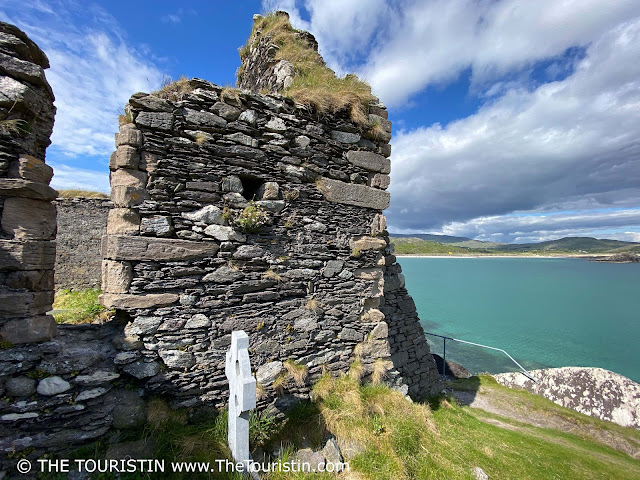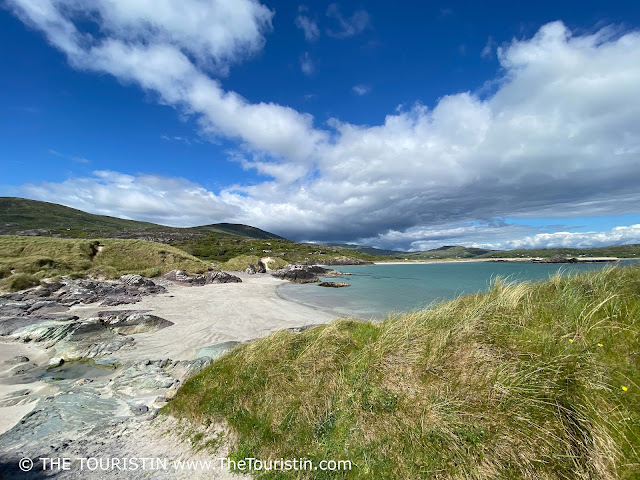This travel guide is full of information and travel inspiration for first-time visitors to the Wild Atlantic Way in Ireland. You are going to see and hear about lakes studded with islands, the ocean, small islands, abandoned islands, remote sandy beaches, seabirds, goats, dinosaurs, lush forests, green hills, stark cliffs, and monastic ruins, beautiful castle ruins, and lonely cottages: The Wild Atlantic Way sure is spellbindingly beautiful.
And you are going to hear stories about Viking raids, Queens, Kings, brave revolutionaries, sturdy fishermen, and curious adventurers. You are sure going to find your ideal place.
Travel Ireland – 40 places to visit on the Wild Atlantic Way
1. Cliffs of Moher - Aillte an Mhothair in Irish
The Cliffs of Moher, 214 metres above sea level at their highest point, stretch for eight kilometres along Ireland’s west coast. Go for a hike along the cliffs. Wander the narrow walking trail. The view down the almost vertical cliffs and over the vastness of the North Atlantic is dizzying. The rich green colour of the grassy plateaus is dazzling (on a sunny day and under a blue sky). Look for seagulls, jackdaws, and guillemots. During summer you might even see puffins around the Cliffs of Moher. The cliffs formed around 320 million years ago. The enormous force of the Atlantic Ocean produces storms and swells. The constant swell erodes the cliffs, and as a result, layers break off and plunge into the ocean. The Burren and the Cliffs of Moher are designated UNESCO Global Geopark sites.
The Irish name Aillte an Mhothair, means the cliffs of An Mothar (the ruin). On the cliffs of Hag's Head is the ruin of a stone fort called Moher O'Ruan. It gives the cliffs their name.
Over 700,000 people visit the Cliffs of Moher every year – and who would not want to see a place this fascinating? Top tip: The Cliffs of Moher are apparently one of the most popular ‘selfie spots’ in the world. If you take a selfie, respect wildlife, and the privacy of other visitors, and stay off the cliff's edge.
Info: Cliffs of Moher, Lislorkan North, Liscannor, Co. Clare, V95 KN9T, Ireland. If you park at the visitor centre, the fee is EUR 7 per Person. Visit the website of the Cliffs of Moher visitor centre for detailed info and booking.
You can also start a hike in either Doolin or Liscannor and walk the distance of 18.3 kilometres (one way) along the Moher Coastal Walk between the two villages. Check the weather conditions before you head off, and better stay home in foggy conditions.
The walk from Doolin to the Cliffs of Moher Visitor Centre takes about three hours. There is public transport available for your return to Doolin (the 350 bus runs every two hours).
2. Doolin - Dúlainn in Irish
Doolin is an as nice as pie little village set in the dramatic scenery of Ireland's Burren National Park. The village with a population of about 500 sits hidden in a scenic coastal landscape near the Cliffs of Moher. Picture lush green rolling hills and the wild North Atlantic. A narrow road goes all the way down to Doolin's pier. The main road is lined with colourfully painted cottages. It's not just its location within walking distance to the spectacular Cliffs of Moher and the natural treasures of the Burren that makes Doolin such a popular destination. Doolin is also the home of traditional Irish music. Get under Doolin's spell and visit one of its craft shops, cafés or pubs. Make sure to visit the Traditional Music Shop on Fisher Street.
Info: Fisher Street, Doolin, Co. Clare, V95 CP21, Ireland.
3. Galway - Gaillimh in Irish
You know that one friend that is always ready to
party. That is Galway with 800 years of history for you. Galway with 122 festivals and events per year, a place where the craic is mighty, is Ireland’s
festival capital. Galway became a UNESCO City of Film in 2014. In 2018, Galway
was awarded the European Region of Gastronomy. As if all that wouldn't have
been enough, in 2020, Galway was the European Capital of Culture. In stark
contrast, you also find quietness, roaring waves, seagrass dancing in the wind,
ancient stone walls, green fields, and soft sandy beaches. Galway is Ireland's
third-largest town after Dublin and Cork. For sightseeing in
Galway make your way to the harbour and cathedral, browse Quay Street and
stroll along Salthill Promenade.
Info: Pub with traditional music in Galway: Tigh Chóilí.
4. Maam Cross
Sometimes you don’t need a destination. It is all about the road you travel. Marshland, moorland, lakes, craggy mountain peaks, grazing sheep, lonely roads, rivers, and waterfalls in Connemara.
5. Killary Harbour
- An Caoláire Rua in Irish
Killary Harbour, the 16-kilometre-long glacial fjord measures 45 metres at its deepest point. Standing at the shore of the fjord, the panorama is one of a kind. It feels as if being in a century-old oil painting. The vista of the scenery with up to 800-metre-high mountain slopes and cottages on green rolling hills is paradisiacal. You are in the heart of Connemara, right between the counties of Galway and Mayo.
6. Leenaun - Leenane
- An Líonán in Irish
The village of Leenane sits between the Mweelrea, Devil’s Mother and Maamturk Mountains. Its positioned almost at the head of Ireland’s only Fjord, Killary Harbour. The name Leenane refers to its geographical position, a ravine, that makes its way through the narrows of the fjord to the village. Mweelrea, the highest peak towers with impressive beauty over the water. Have a coffee or cold drink at one of the many cafés and pubs in the village.
Info: Sheep and Wool Centre, Westport Road, Leenane, Co. Galway, Ireland. Buy homemade goodies to take home and have a coffee or more.
7. Misunderstood Heron in Leenane
Have you ever eaten in the great outdoors with a
killer of a view? This is the place. It is spectacular. While I had lunch at
the Misunderstood Heron the weather went from sunny and blue sky to dark grey
sky, heavy rain and all the way back to sunny. I didn't mind the massive downpour
since the food and coffee are so good. All served with a friendly smile. Go for
the loop-walk in Killary Coastal Park down to the fjord first to build up an
appetite. The trail is only two kilometres long though – short but thrillingly
beautiful. The menu changes with the seasons.
Info: Misunderstood Heron Cafe, Derrynacleigh, Leenane, Co. Galway. Tickets Killary Coastal Park: The loop walk is free.
8. Glassilaun Beach
Leave the Connemara Loop and follow the narrow country road through rolling green hills all the way down to this sandy beach. Even when it is overcast the ocean has this striking light green to blue colour. When the sun peeks through the clouds, the North Atlantic together with the red colour of the rock formations looks even more wonderful.
Info: Glassilaun Beach, Glassilaun, Leenane, Connacht, Ireland.
9. Clifden – An Clochán in Irish
There is the Atlantic Ocean, there are the mountains, and then there is Clifden. When you look at the colourful houses that line the streets you would never guess that this region was once considered a lawless wilderness. The town, located not far from Connemara National Park, exudes pure Irish friendliness. There are numerous small shops selling locally produced goods, the Clifden bookshop, cafés, and pubs waiting to entertain you. The hours just fly by (reason enough to visit several times). Speaking about flying. Clifden is a thrilling place for all lovers of aviation and adventure.
The first non-stop
transatlantic crossing landed in June 1919 in Clifden. Captain John Alcock and
Lieutenant Arthur Whitten Brown started their journey in St John’s in Newfoundland.
It took them 16 hours to overcome the distance of 1,890 miles with their
twin-engined Vickers Vimy biplane. They aimed to land in nearby Galway but
crash-landed in a bog in Clifden. The pilots won prize money and were knighted
for their extraordinary success. Clifden is a gorgeous town and a reminder that
dreams can come true.
Info: Clifden Bookshop. Main St, Clifden, Co. Galway, Ireland.
10. Sky Road and Clifden Castle
The 11 kilometres long Sky Road in Clifden is one of the most spectacular roads in the Connemara region. Drive the upper road on the Kingstown peninsula for a panoramic view over the Atlantic Ocean and the coastline. It is a view that you won't forget so soon.
Stop at Clifden Castle built in 1818 by John D’Arcy, the same guy who founded Clifden. When the family where no longer able to pay outstanding debts during the Great Potato Famine, they lost their residence in the mid-1800's. It is now a ruin and well worth the short hike to get there.
Info Sky Road: A good starting point for the Sky Road is almost next to Christ Church on Church Hill in Clifden. Tickets to Clifden Castle: Free.
11.
Roundstone – Cloch na Rón in Irish
Follow a coastal drive overlooking the Atlantic at the foot of Errisbeg Mountain to reach Roundstone. The village, founded in the mid-1820s, sits on the western arm of Bertraghboy bay in Connemara. Cloch Na Ron means Rock of the Seals (you are greeted by a rock decorated with a seal on top). In Roundstone, it is all about art and handicrafts. There is a traditional craft centre, pottery, jewellery and instrument making.
Info: Roundhouse. Make your way to Monastery Rd, Roundstone, Co. Galway, Ireland. Ideal to visit the Pottery, the Instrument and crafts maker and go down for a stroll along the shore.
12. Dog’s Bay
Several shades of blue and green and blue and green - on a sunny day the scenery looks to good to be true. Dog's Bay is a phenomenal picturesque bay in County Galway in Connemara. Perfectly shaped like the moon when it is less than half full. Go for a leisurely and gorgeous walk along its more than 1.5 kilometres of soft white sandy beach (three kilometres return that is) before you hop into the water.
Info: Dogs’s Bay, Roundstone, County Galway, Ireland.
13. Kylemore Abbey and Kylemore’s Gothic Church
This is love. A husband built a wonderful fairy-tale castle at Kylemore lake for his wife. After hard blows of fate, the property was sold. When Benedictine nuns bought the castle plus the surrounding land, the castle was converted into an Abbey.
Info: Kylemore Abbey, Pollacappul, Co. Galway,
Ireland. Tickets: please visit the website.
14. Kilkee – Cill
Chaoi in Irish
There is a large sandy beach in Kilkee on the western coast. The 1.5 kilometres in length, of Moore Bay, can be your playground. Kilkee which takes its name from Cill Caoidhe, from the site of a burial ground has all the charm one can expect from a seaside resort.
Info: You find lovely cafes on O'Curry St, Dough, Kilkee, Co. Clare, V15 NH60, Ireland.
15. The Bridges of Ross – Droichid Rois in Irish
The Loop Head Peninsula in County Clare is the place where the River Shannon meets the Atlantic Ocean. There used to be a trio of sea arches on this headland. Just look at the massive waves come crashing in. With continuous erosion of seawater over the course of time the number of three arches dropped to one. Since old habits die hard the name The Bridges of Ross is still used. The one remaining sea arch is still an impressive sight to look at. Who knows, in the future, there might develop new sea arches on this stretch of the Atlantic coast? Only time will tell.
Info: Bridges of Ross. Ross, County Clare. Ireland. Tickets: Free.
16. Shannon Car Ferry
The Killimer to Tarbert Car Ferry connects counties Clare and Kerry. It is only a short ride of about twenty minutes over the Shannon Estuary, but it is a beautiful one. The ferry runs on the hour (check times when you plan to travel).
Info: Shannon Car Ferries. Tickets: from EUR 23, visit the website.
17. Jack’s Pub in Cromane
Grab a drink in the early evening, find a place on the green and look at how pretty the sun sets over the bay. What is not to love? Exactly. There is also a restaurant and a beach to visit.
Info: Jack's Coastguard Restaurant. Cromane Lower, Cromane, Co. Kerry, V93 Y42F, Ireland.
18. Killorglin - Cill Orglan in Irish
This little town has a goat as king. The Ring of Kerry and the Wild Atlantic Way meander through the middle of town. Puck, the famous goat, or rather, the King Puck statue, stands at the entrance to the village right by the river Laune, greeting visitors and locals. Killorglin has quaint pubs and cafes. The colourful house facades and the flower decorations along Lower- and Upper Bridge Street give the town its charm.
Legend has it that Cromwell's troops were about to occupy the area around Killorglin in the 17th century. They plundered and destroyed all that came in their way. A group of mountain goats, munching lush grass in the afternoon sun, were disturbed by the invaders. One goat then ran straight to Killorglin. The locals took the goat's arrival as a sign that British forces were nearby. This gave them enough time to prepare for the arrival of Cromwell's troops and protect their possessions. In gratitude and recognition of the goat's support, the residents of Killorglin decided to hold a festival in its honour every year. Come August, locals and visitors celebrate Killorglin's king over several days. A goat gets caught in the surrounding mountains, and a local woman takes on the role of Queen Puck for the event.
Info: King Puck Statue. Dromavally, Co. Kerry, Ireland.
19. Dingle – An Daingean in Irish
Dingle is both tranquil and fun and full of colour. The town's stylish quirkiness gives you a feeling of lightness. Browse fashion, craft and jewellery shops, pop into cheese shops, buy books and visit galleries on Green Street before you hop into one of Dingle's many pubs to listen to live music. You can easily spend a few days in Dingle.
Info: Dingle, Leabharlann an Daingin (Dingle Library), Green St, Dingle, Co. Kerry, Ireland.
20. Minard Castle - Caisleán na Mine Airde in Irish
The picturesque ruin of Minard Castle stands on a hill above Kilmurry Bay. When Cromwell's troops attacked in in 1650, no one survived, and the castle was left behind in ruins. The tower ruin isn't safe to visit. One has a great view from the beach. Only visit the beach when you feel you are as sure footed as a deer. The beach is a storm beach, its massive boulders were rolled ashore by the ocean.
Info: Minard Castle. Kilmurry, Banogue, Co. Kerry,
Ireland. Tickets: Free.
21. Inch Beach
Two words that best describe Inch Strand are endless and stunning. The sandy beach reaches several kilometres into Dingle Bay. The whole lengths of Inch beach is backed by magnificent sand dunes. Go for a long walk and enjoy the sound of the waves and the perfect view over the ocean and towards the Kerry Mountains.
Info: Inch Beach. Inch. Co Kerry, Ireland.
22. Portmagee – An Caladh in Irish
It is a safe harbour. The brightly coloured seaside village of Portmagee was once an oasis for pirates and smugglers. They made a good living by robbing tea, coffee, textiles, and tobacco from trade ships from the continent and North America. The village is named after one of the most notorious, Captain Magee. The only buccaneers you come across today are tourists. On most days in summer, weather permitting, they fall into Portmagee early morning. Keen to jump aboard boats that might transport them to the Skelligs.
Info: Portmagee is the starting point for trips to the Skellig Islands. The boats start from the new marina. A bridge leads from Portmagee to Valentia Island.
23. Skellig Michael - Sceilg Mhichíl in Irish
Irish monks decided to build a monastery on a rock, 218 metres above sea level, in the middle of the North Atlantic. St Fionan's Monastery, Mainistir Fhionáin in Irish, dedicated to St Michael the archangel, built somewhere between 950 and 1050 is an exciting place. The monks lived on Skellig Michael for centuries. Their story about life in harsh conditions, growing their own vegetables, eating eggs and fish, and also even enduring several Viking attacks is a spellbinding one. You can visit the original stone beehive huts and see stone walls and stone crosses in the cemetery. To this day, the place remains unchanged except for a lighthouse erected in 1821. Skellig Michael was inscribed on the UNESCO World Heritage List in 1996.
One can very well imagine that it might have taken the monks about a day's journey by boat from the mainland to get here. Today you can jump on a guide's boat in Portmagee marina in South West Kerry and sail the 12 kilometres to Skellig Michael in about one hour. If you are lucky you get to see dolphins and seabirds en route. On the tour to Skellig Michael, you go by Little Skellig Island. In summer, this island is the home of over 30,000 gannets. Wait till you see how they dive into the North Atlantic from heights of up to 30 metres. Be awed by the bird’s grace and its two metres wingspan.
Once you arrive on Skellig Michael you go for a leisurely walk along the lighthouse path but only until the ascend becomes a rather steep hike. To get up to the monastery, you have to climb up a seriously steep 618 steps long staircase. The more than a thousand years ago built staircase is uneven and narrow. There is no fence, there is not much to hold onto. The view down cliff edges and over abrupt mountain slopes that lead all the way down to the North Atlantic is dramatic. It takes your breath away in more ways than one (depending on how fit and acrophobic you are). Sceilg means steep rock for a reason.
To top it all, in the summer months, until mid-August, you are going to see hundreds of Atlantic puffins. The cute sea parrots visit Skellig Michael to breed. The female puffin lies only one single egg per year, and the male and female both incubate the egg and take care of the puffling when it hatches after 40 days. Due to the climate crisis and warming seas, puffins can't find enough cold-water fish. As a result, they can't feed pufflings properly meaning fewer have the chance to grow up to be adults.
Skellig Michael is the ideal place to observe the puffin's comical behaviour up close. It is adorable to watch them sort of crash landing. Stand still and wait. They come duck-walk-style towards you and tilt their head to inquisitively look at you before they head back into their burrow. Once August arrives the puffins will be gone. During winter they may travel all the way over the Atlantic to Canada or spend their time in the ocean. You read that right, puffins spend their time in the open sea, and they can dive up to 60 metres.
Puffin
facts in short: Once puffins leave their breeding grounds, they spend about
eight months at sea. Puffins can dive up to 60 metres deep and their wings flap
about 400 times per minute. Large threats to puffins are warming oceans and
plastic pollution. The International Union for Conservation of Nature (IUCN)
red list classifies puffins as vulnerable.
Info: Skellig Michael. You can visit the island between Mid-May and end of September. Please book the boat tour well in advance to avoid disappointment. Tickets are about EUR 120 per Person. Bring sunscreen, snacks, and water. Wear sturdy shoes and have water protective clothing ready. I was devastated to see somebody let a drone fly on Skellig Michael. The air was teeming with sea birds and in the middle was that drone. You are going to disturb the birds, please don’t.
24. Valentia Island – Dairbhre in Irish
Southwest in County Kerry, Valentia Island, home to about 660 locals, is one of Europe's most westerly inhabited isles. The island is easy to reach via a bridge from Portmagee. You are not the first visitor. Stories about living creatures visiting Valentia Island go back a long way. As recent as 1993 scientists made the most amazing find when they discovered 360 million years old footprints of tetrapods. At the time when the four-legged vertebrates walked on land, Ireland was still joined to North America. The footprints the dinosaurs left in the mud turned into stone over time and are among the oldest known footprints of life on land.
Millions of years later, the Knights of Kerry chose to live on Valentia Island. In the 1830s, the 19th Knight of Kerry began planting a garden with rare plants from the southern hemisphere. The subtropical plants can only thrive since this place enjoys the mildest microclimate in the whole of Ireland.
Drive down to Valentia's lighthouse, to learn about the seafaring history, the former lighthouse keepers and stop to see the terminus of the first transatlantic cable, which was first laid in 1857, re-laid functionally in 1866 and then used until 1966. The connection ran between Valentia Island and Trinity Bay in Newfoundland. 40 telegraphers were needed on Valentia Island to receive and sent transatlantic telegraphs to connect the new with the old world. It changed communication. Valentia Island's transatlantic cable is now considered to become UNESCO World Heritage status. Together with Skellig Michael this would be the second UNESCO site in County Kerry.
Info: Valentia Island Lighthouse. Cromwell Point, Glanleam, Valentia Island, Co. Kerry, V23 P680, Ireland. Check the weather conditions before your visit to the lighthouse. The lighthouse at Cromwell Point might be closed on rough days when it is battered by storms. Please note: The lighthouse is not accessible.
25. Killarney - Cill Airne in Irish
Located in southwest Ireland, Killarney is after Tralee the second-largest city in County Kerry. In the 16th century, the Desmond Rebellion against English authority failed. Having no choice, the defeated local chieftains granted two English landlords the valley.
Destroyed in the Cromwelliam war of 1652 and founded again in the 18th century, the town stands for linen- and wool manufacturing. By now the whole valley is the Killarney National Park. A lucky 13,500 town's people live in this wild and romantic stretch of land at the foothills of the Macgillycuddy's Reeks, Ireland's highest mountain range. There is more excellent news. The Killarney National Park UNESCO Biosphere Reserve, first designated in 1982, grew bigger in size and includes now also areas outside the park's boundaries. It was renamed the Kerry Biosphere Reserve.
Killarney is a charming town. Browse bookshops and have lunch at one of the countless cafés or jump into one of the many pubs. Go hiking through vast woodlands and along lakes. See whether you can spot deer, white-tailed eagles, and ravens. The town is also a popular base to head off to explore the Ring of Kerry.
Before you leave, visit Saint Mary’s Church to look at its colourful glass windows. It sits on a site of an early ancient church and gives Killarney its name. The "Church of the Sloes" in Irish ‘Cill Airne’ means Killarney.
Info: Saint Mary’s Church, Kenmare Place, Killarney Co.Kerry, Ireland, V93 CD00. Tickets: Free.
26. Muckross House and Muckross Lake
Seven kilometres from Killarney, you find Muckross House. From the beautiful manor house, you have a view over Muckross Lake. Go on a loop walk; it is only 15 kilometres. With Muckross House built in 1843, the family showed their sense of style and love of an elegant lifestyle. It is grand and atmospheric with its many chimneys, oriel windows, decorative finials, and stepped gables.
In 1861, the English Queen Victoria and her husband Prince Albert stayed for two nights at the house. The family went to great lengths to make the stay special by redecorating all the rooms reserved for the Queen's visit in an even grander style.
The original owners had to sell it in 1899 when they experienced financial difficulties. Bought by a Lord, part of the Guinness family who sold it on to an American after only a decade. The new owner bought the manor to gift it to his daughter and son-in-law. When the woman died twenty years later, her husband donated it to Ireland.
The property changed hands a few times, its history is glamorous, also dramatic, and sad. Muckross House looks magnificent still.
Some believe that Bram Stoker wrote Dracula after he visited nearby Muckross Abbey (the ruin of it). The Dublin-born writer had heard an inspiring story about a religious hermit who slept in a coffin in the Abbey.
Info: Muckross House. The National Park,
Dromyrourk, Killarney, Co. Kerry, Ireland. Visit the website for prices. The entrance to the park is free.
27. Killarney - Upper Lake - An Loch Uachtarach in Irish
The Upper Lake, about 17 kilometres from Killarney, is studded with islands grown with natural forests of Killarney strawberry trees, holly, oak, and mountain ash. Walk along the lake's shore, through the heath or have a picnic on one of the large boulders, enjoy life, and just dream. What a truly heavenly place.
28. Ladies' View
You find Ladies View in the heart of Killarney National Park. Ladies View is named in memory of one of Queen Victoria’s ladies-in-waiting. They visited in 1861 and the woman found this is the best view far and wide. Not much has changed about the view ever since. Visit and see that her description is true. It is still a place of natural beauty and offers a view over Lough Leane, Muckross Lake, and the Upper Lake, the three lakes of Killarney National Park. There is a café and a souvenir shop.
Info: Ladies' View, Derrycunnihy, Killarney, Co. Kerry, V93 X376, Ireland.
29. Ross Castle – Caisleán an Rois in Irish
Ross Castle sits on the shores of Lough Leane in Killarney National Park. Built by O'Donoghues Mór in the 15th century, it became the scene of the final uprising of the Roman Catholic Irish against the Protestant English. A prophecy said that Ross Castle could only be taken by a ship. Knowing about this prophecy, a British commander deployed his troops in a warship on Lough Leane. The Irish surrendered without a fight. Two of the four watchtowers of the original structure were later removed to build barracks in the courtyard. Over time, the castle fell into disrepair. When Ross Castle became the property of Ireland in 1979 the ruins were restored to their original beauty.
An excellent time to visit Ross Castle is the morning of the first of May. In the 16th century, the Clan O'Donoghue lost their lands to the English Crown. People say that chief O'Donoghue Mor still lives near Ross Castle. To be more precise, the chief slumbers beneath the surface of Lough Leane. But every seven years on the first of May, he jumps onto his magnificent white horse to ride around the lake. According to legend anyone who sees O'Donoghue and his white horse will be lucky for the rest of their lives.
To visit Ross Castle, take a walk from Killarney towards Lough Leane. There are also trails leading to Ross Castle from Muckross Abbey and Muckross House. The Ross Castle Loop runs 5.6 kilometres along Lough Leane. In the middle of the lake is Innisfallen Island with the ruins of an ancient 7th-century monastery. If you don't feel like walking, there is parking only a few metres from Ross Castle.
Info: Ross Castle,
Ross Road, Killarney, Co. Kerry. V93 V304. Ireland. Tickets: Free.
30. Slea Head Drive – Slí Ceann Sléibhe
If you start your drive in Dingle, you are about to see about 48 kilometres of magnificence. The Slea Head Drive is named after the Slea Head or Headland and travels along the most western point of mainland Europe.
As if the rest of the Wild Atlantic Way wouldn’t be pretty enough already. Wherever you look it is stunning. The curvy road travels along the glorious Atlantic, through lush green rolling hills and along rugged cliffs. You come across imposing rock formations, lonely beaches, colourful houses, working farms, tiny villages, quirky pubs, and the odd old stone beehives. The abandoned Blasket Islands are in sight, seemingly only a skip and a jump away.
People say the Slea Head Drive panorama route is dangerous to drive when it is not. Just respect oncoming traffic, be kind and friendly and you should be fine and having fun. Plan a whole day for the Slea Head drive and enjoy it. You can of course drive the loop of Slea Head Drive in about three to four hours, but there is so much to discover, that it would be a shame rushing it.
Info: Slea Head Drive, Start in Dingle. Drive clockwise. R 559. Co. Kerry, Ireland. Tickets: The road is free to use.
31. Fahan Beehive Huts
When you visit the Fahan Beehive Huts you get to see different styles of these stone huts. It is a remarkable place, with a killer view, that gives you the opportunity to also see sculpted and engraved stone crosses, and ring forts.
The beehive huts, also known as clochán, were at first built and used by monks for religious reasons. Over time they became storage facilities. The construction method of the beehives, with about one-metre-thick stone walls, is best described as drystone-corbelling. Archaeologists believe that they were first built in the Bronze Age. You can very well see exactly how craftsmen and builders put stones in a way that they project inwards in each layer. Finally, at the top of the structure, the stones hold each other in place.
Info:
Fahan Beehive Huts, R559, Co. Kerry, Ireland. Tickets: EUR 3.
32. Dunquin Pier – Cé Dún Chaoin in Irish
A steep serpentine path built into the giant pointed cliffs leads down to a harbour. Dunquin Harbour sits at the feet of towering cliffs, hugging the rocks tight as intrepid. This is the place from where one can catch the boat to the Great Blasket Island. If you think this is steep to walk down to, try to imagine that this was the only landing place for locals who lived here for hundreds of years. They had to somehow carry everything (think furniture, cattle, food) they needed up and down the steep path. To reach home, they had to manage the often rather rough waters of the Atlantic. Also, seeing a GP, or any other doctor, or meeting the rest of the family was an undertaking. They did all this by rowing a currach, a wooden framed boat, covered in canvas and coated with tar. Life on the island was, given the circumstances, rather tough. Locals decided to leave (and abandon) the islands in 1953.
I highly recommend reading The Loneliest Boy in the World - The Last Child of the Great Blasket Island by Gearóid Cheaist Ó Catháin and Patricia Ahern. In his memoir, Gearóid Cheaist Ó Catháin, who was the last child to be brought up on the Blasket Islands, tells readers about island life.
The surrounding green hills are an ideal place for a picnic, to look at the Atlantic and go for a hike along the cliffs (stay away from the cliff edges though).
Info: Dunquin Pier, Ballyickeen Commons, Co. Kerry,
Ireland. Tickets: Free.
33. Ballyferriter - Baile an Fheirtéaraigh in Irish
The Slea Head Drive runs right through the village of Ballyferriter. The village nestled between the majestic Croaghmarhin hill to the south and a ridge of jagged peaks to the north, Sybil Head, feels remote. From here it is only ten kilometres to the colourful port town of Dingle. Ballyferriter has a little museum with a bookshop and café, a pottery store, a prominent church in its centre, pubs and a hotel.
Info: Músaem Chorca Dhuibhne. West Kerry Museum. Gortmore. Ballyferriter Village, Co. Kerry, V92 Y4EK, Ireland.
34. Gallarus Oratory - Sáipéilín Ghallarais in Irish
Have you ever seen an upside-down turned boat? Gallarus Oratory, a stone church built between the 6th and 9th centuries, looks exactly like the keel of a boat. It was used as a church and burial ground. It is designed in the same dry stone corbelling style as the other beehives in the area. OK, the 'clever' people tell you to not pay the entrance fee and drive up the road. Somebody must look after this place and preserves it for future generations.
Info: Gallarus Oratory. Caherdorgan South,
Gallarus, Co. Kerry, Ireland. Tickets: EUR 3 to 4.
35. Kilmalkedar Church - Cill Mhaoilchéadair in Irish
Kilmalkedar Church, Cill Mhaoilchéadair in Irish, sits on the pilgrimage route, Cosán na Naomh - the Saints’ Path. If you visit, many details show you that this was an important monastery and parish in the early medieval period. The 12th-century Romanesque church is in ruins, but one can make out many detailed stone carvings still. Can you believe that you stand on ground that was in use from the 13th to 16th century? Near the church on the graveyard, there is a large stone Latin cross, possibly from the 12 centuries too.
Walk the grounds, to look at tombstones and see what story they might tell you. Close to the church, there is a sundial, that seems to date from the 8th or 9th centuries AD. It is an overused word, but this place is unbelievable.
Info: Kilmalkedar, Dingle, Co.
Kerry, Ireland. Tickets: Free.
36. Conor Pass
To get from one side of the Dingle Peninsula to the
other, simply cross this 12-kilometre-long pass. It is a picturesque journey,
but at times the road is so narrow that only cars can use it - lorries are too
large. One of the highest pass roads in Ireland, it offers spectacular views
over mountains, lakes, and the valley. Stop at the top to go for a hike and
take a breath. From here, you can see Loop Head Co. Clare, Dingle Bay, the
Iveragh Peninsula, the Ring of Kerry, and over the Atlantic Ocean all the way to the
Skellig Islands. Plan a second stop at nearby Peddlar's Lake. Conor Pass is free to use for visitors.
37. Peddlar’s Lake – Lough Doon and Peddlar’s Waterfall
Lough Doon, also known as Peddlar's Lake, is a bowl-shaped lake, whereas the mountain range surrounds it like an amphitheatre. The cirque was shaped by glaciers and is all that is left behind as these retreated. To reach this so-called corrie lake you have to climb up over a few large boulders. In summer, stay quiet and listen to the baa of the sheep roaming the steep slopes. Follow the baa with your eyes, you are going to be surprised about what good rock climbers sheep are. Depending on the weather and rainfall, there is a waterfall near the road.
38. Moll’s Gap
Moll's Gap is an ideal stop about 20 kilometres from Killarney on the Ring of Kerry. In the 1820s, a guy called Moll Kissane knew this already and invited guests into his unlicensed pub. That was before one could easily reach this place by road. To honour his stamina and devotion, the place is named after him. The view is another perfect one and there is a café.
Info: Moll’s Gap. Eirc. Co Kerry, Ireland.
39. Kenmare – Neidin in Irish
The cute town of Kenmare is a peaceful country town that sits amidst stunning scenery on the Ring of Kerry. Kenmare might have been established in 1670, but there is a Druid circle that dates to about 1,400 BC. The town is too pretty. Henry Street, one of the town's main thoroughfares, is an array of colourful shopfronts, decorated lovingly with skilfully lettered signs, and there is also a view of a church. You find language schools, bike rentals, pubs, cafés, antique shops and boutiques. Neidin - the Irish name means little nest, so apt. Pretty-pretty Kenmare.
Info: Henry Street, Kenmare, Co Kerry, Ireland.
40. Derrynane Abbey - Oileán na Mainistreach in Irish
The ruins of Derrynane Abbey are on magnificent powdery white sandy Derrynane beach. Of the former Abbey, only the ruins of the main monastery stand as witnesses of times gone by. The Abbey said to have been built in the sixth century. A big surprise is that the graveyard is still used as a cemetery to this day (take that into account when you visit).
Info: Derrynane Abbey, Abbey Island, Derrynane Beach, Caherdaniel, Co Kerry, Ireland. Tickets: Free.
Visa requirements for Ireland
Ireland is not a member state of the Schengen Area. It is best to visit this website to see whether you need a Visa to visit Ireland.
How to get to Ireland
By plane: Many European airports offer direct flights to Dublin. Dublin Airport is about ten kilometres from the centre. You can take a public bus or rent a car and reach Dublin in about 30 minutes.
By ferry: Jump onto the ferry in France and make your way to Ireland. You can travel by ferry from Cherbourg to Dublin, and another option would be to travel by ferry from Roscoff to Cork.
How long should I visit the Wild Atlantic Way?
Do you visit places, take a few photos, and are on your way to the next highlight? Good news, there are enough highlights along the Wild Atlantic Way that are easy to reach and that you can visit quickly. If that is what you envision for your trip, a week might be enough to see sights along the Wild Atlantic Way. If you want to look around and experience the sounds and smells of nature, look at birds and seals, and find cute pubs and restaurants, calculate some more time. As always in life, it depends on what you like to do and on what you are interested in.
All places I recommend visiting, I saw in sixteen days. At times it all felt too rushed, and I recommend 21 days as more suitable for this itinerary.
Best time to visit Ireland – The weather in Ireland
The weather in Ireland is one of the most beloved topics. Locals just love talking about the weather. The weather gets mentioned in every conversation at least once. You can visit Ireland all year round. Just bring the right clothes and don’t forget a rain cover.
Temperatures in Ireland don’t vary that heavily according to the seasons. Winters are mild with five to seven degrees Celsius on average– the wind might make it feel colder than it is, and there will be lots of rainfall. There is less rain in spring, and temperatures are a bit warmer up to ten degrees Celsius. You can still expect it to rain regularly.
Summer, as in July and August, has temperatures around 18 to 20 degrees Celsius. There will be only a few days in summer when it is around 25 degrees Celsius. Come autumn in September, it gets fresh with storms coming in and more rain.
In all seasons, what you will experience is that there is almost ever a breeze, and it can go from rain to sunny within moments. The good thing about the summer months is not so much the high summery temperatures everybody loves so much but the light that comes with summer. Winter days are short, and the light is welcomed by everyone.
What to wear when out and about on the Wild Atlantic Way?
It can be windy, sunny, it can rain. And all that in one day. You are by the North Atlantic Ocean. Pack accordingly and be on the safe side. Just bring a rain cover and a jumper and you are going to be fine. In summer, wear sunscreen and a hat.
Ireland – Currency and how to pay
The official currency in Ireland is the EURO. In general, contactless payment is OK. Credit cards are widely accepted.
What to read? Ten Books that Transport you to Ireland – Go on a Verbatim Journey with these titles
Can I ask you something? Make sure you are not responsible for the death of your local bookshop. Please buy all books from local bookshops. No one wants to live in a town centre without independent shops. It is in our hands; we can vote with our purse. There is no need to support online giants when every one of us can support their own community. You will not find any links in this article to online shops. I recommend these books purely out of love for reading and travelling and understanding different cultures. Make sure you are not responsible for the death of your local bookshop. It sounds drastic, but let us face it, it is true.
-The Heart’s Invisible Furies by John Boyne.
-Again, Rachel by Marian Keyes.
-The Girl on the Cliff by Lucina Riley.
-Angela’s Ashes by Frank McCourt.
-Beautiful World Where are You by Sally Rooney.
-The Loneliest Boy in the World: The Last Child of the Great Blasket Island by Gearoid Cheaist O Cathain and Patricia Ahern.
-Normal People by Sally Rooney.
-The Cosy Cottage in Ireland by Julie Caplin.
-James Joyce: A Biography by David Pritchard.
-Wild Irish Women by Marian Broderick.
I recommend these bookshops on the Wild Atlantic Way
Dingle Bookshop, Green Street, Dingle, Co. Kerry, V92 YC64, Ireland
The Clifden Bookshop, Main St, Clifden, Co. Galway, Ireland
Charlie Byrne’s Bookshop. The Cornstore, Middle St, Galway, Ireland
This bookshop in Dublin: The Gutter Bookshop, Cow’s Lane, Temple Bar, Dublin 8, Ireland
From Berlin with love
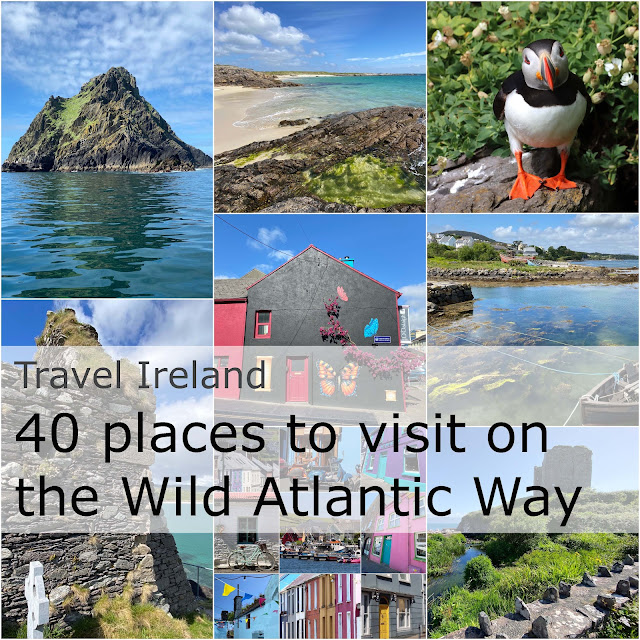
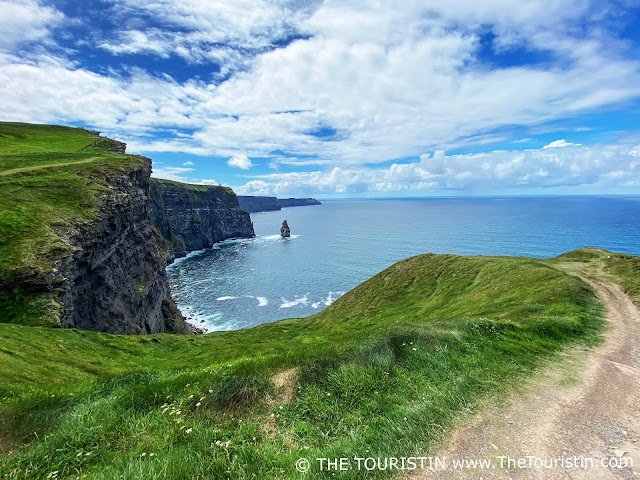

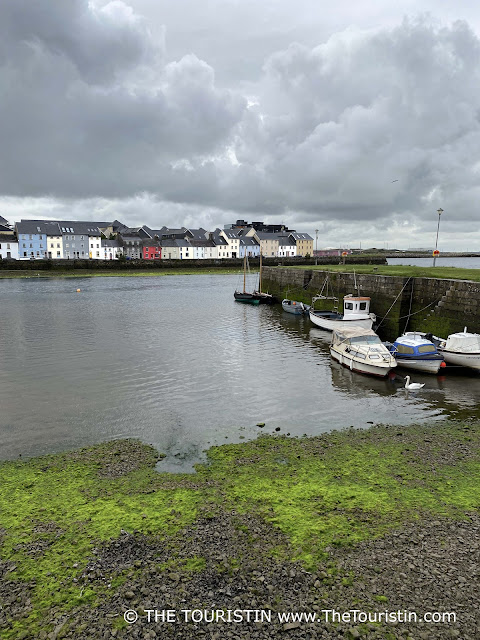
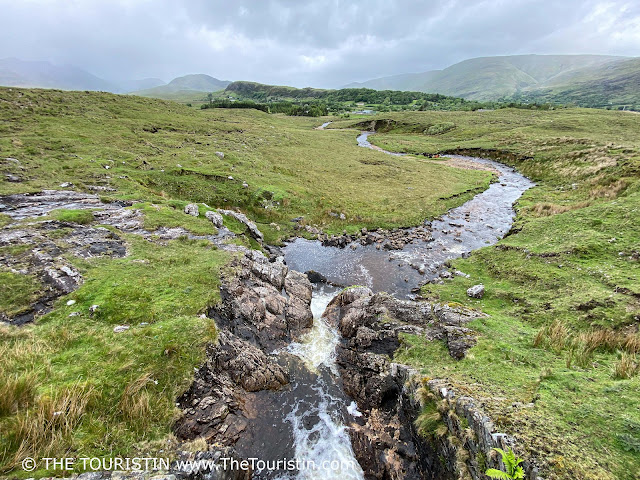


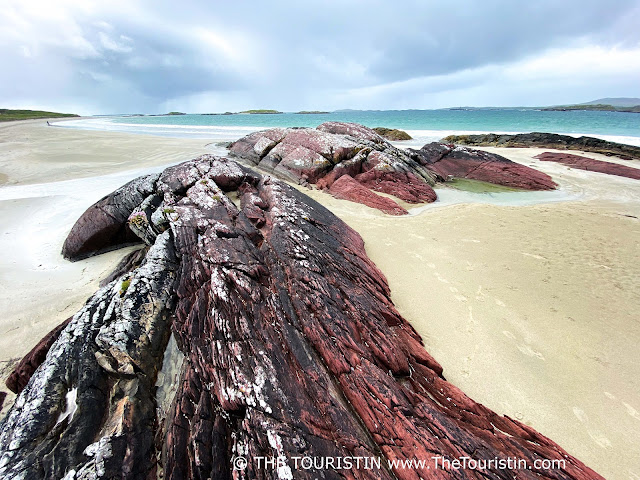
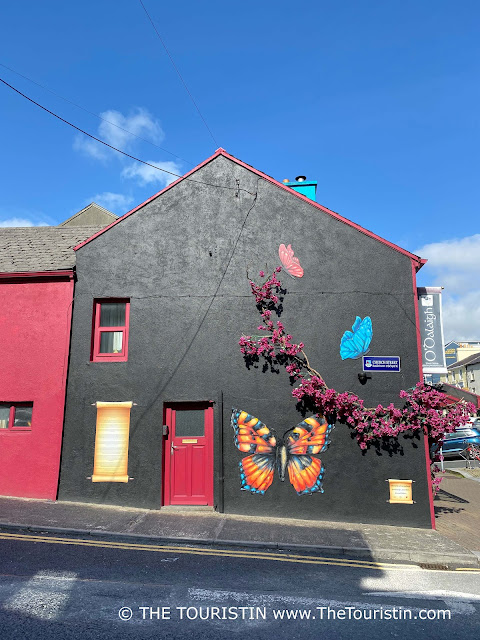





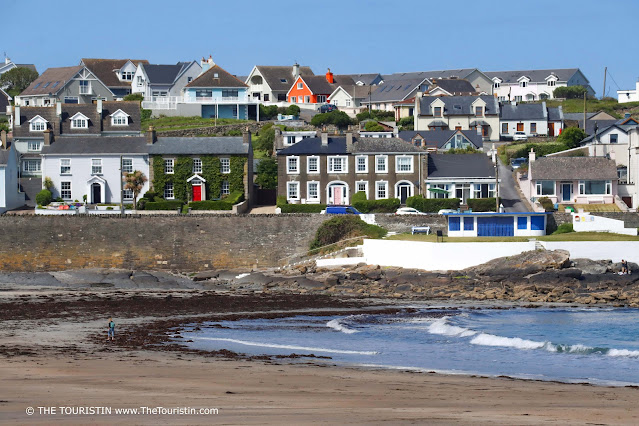



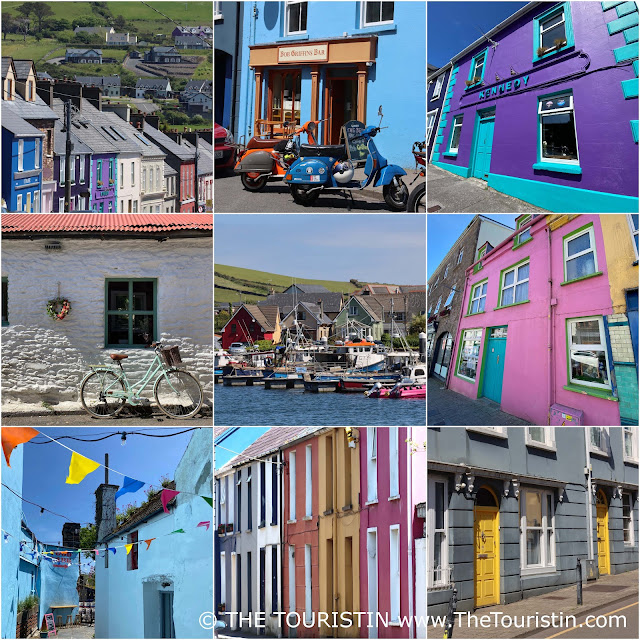
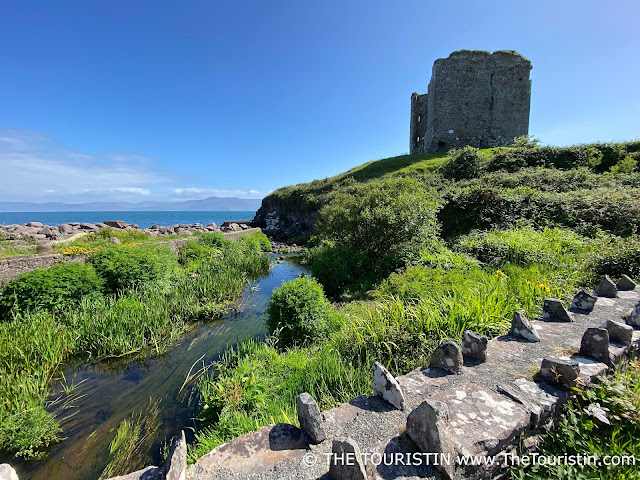
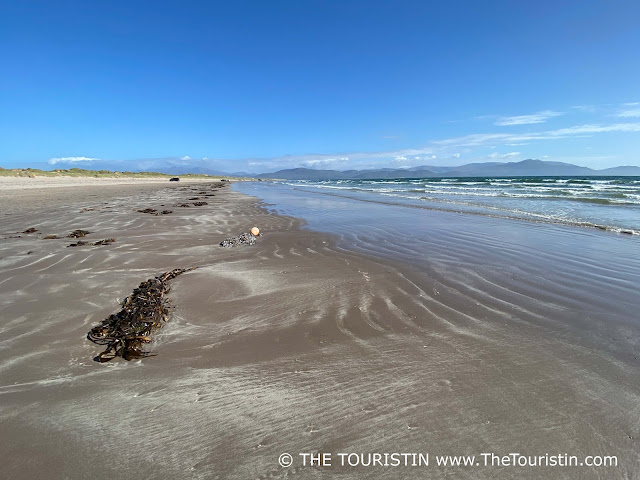


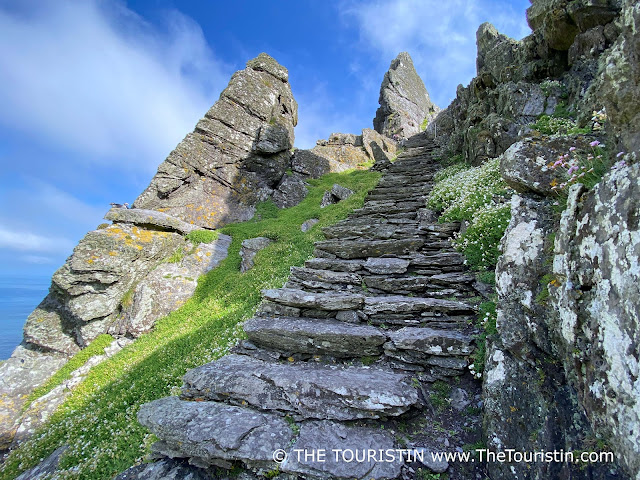

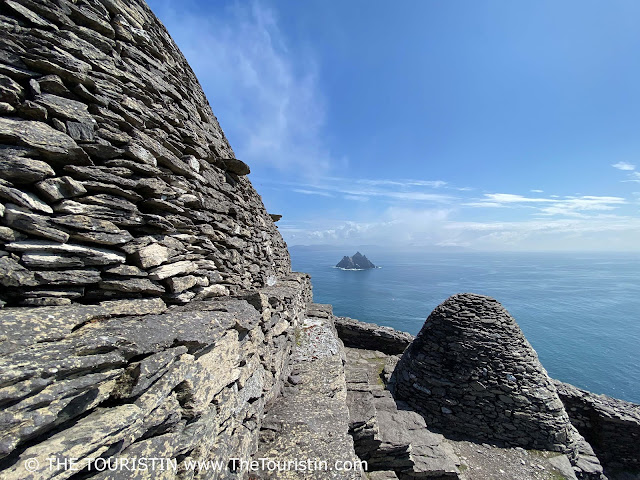
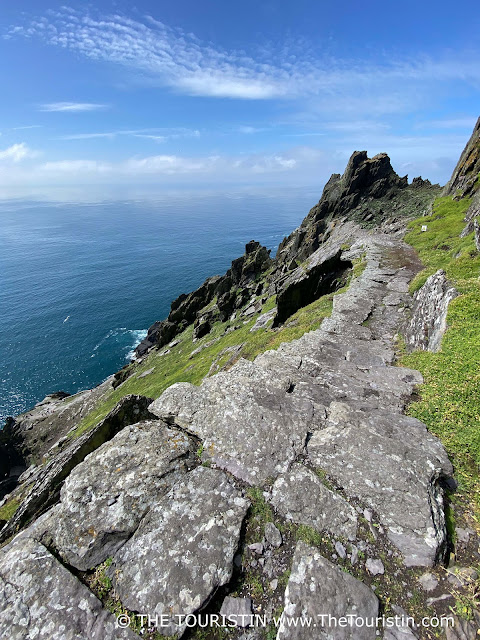


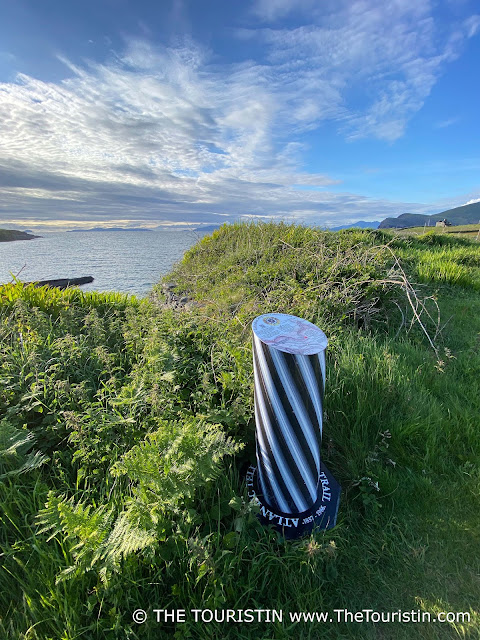
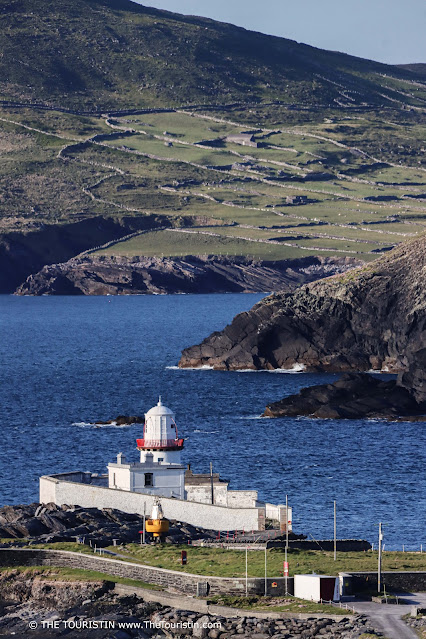

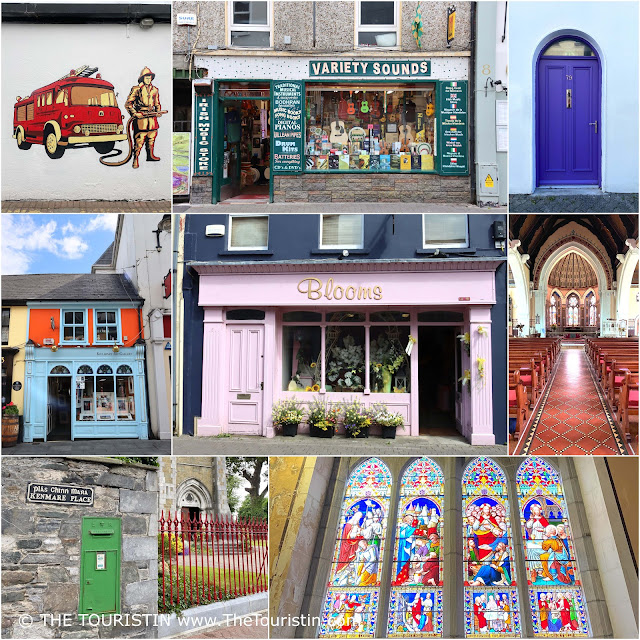


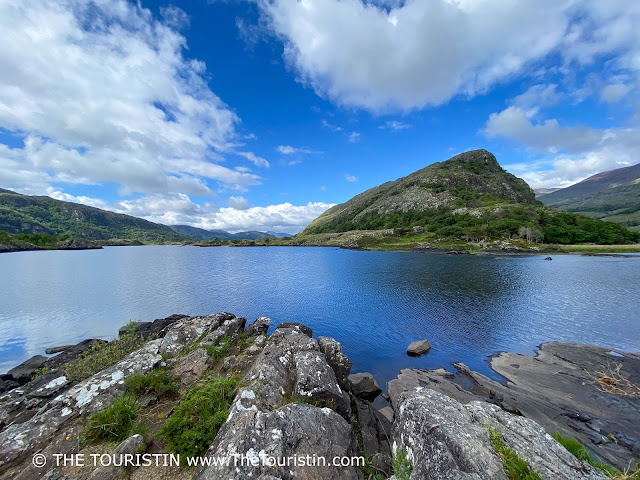





.JPG)




